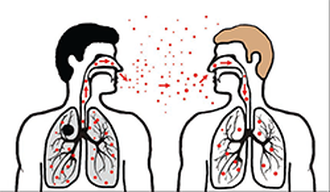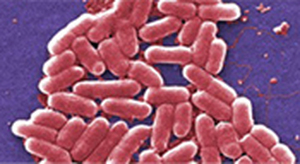Bacterial Infections In Humans
There are relatively few bacteria that can cause diseases or harm humans. Bacterial infectious disease occur when the pathogenic bacteria interfere with the regular routine of host cells and cause cell and tissue destruction.
One example of a bacterial infection is Escherichia coli, or E coli for short.
E coli are bacteria that can be found in foods, the intestines of humans, and throughout the environment. There are many strains of E coli, most of which are harmless, in fact they play an important role in our digestive system. There are 6 types however that can cause harmful effects in humans, and one particular type of E. coli causes disease by making a toxin called Shiga toxin. The bacteria that make these toxins are called "Shiga toxin-producing E. coli", or STEC.'
E coli is transmitted through contaminated water or food, or through contact with animals or people.
One example of a bacterial infection is Escherichia coli, or E coli for short.
E coli are bacteria that can be found in foods, the intestines of humans, and throughout the environment. There are many strains of E coli, most of which are harmless, in fact they play an important role in our digestive system. There are 6 types however that can cause harmful effects in humans, and one particular type of E. coli causes disease by making a toxin called Shiga toxin. The bacteria that make these toxins are called "Shiga toxin-producing E. coli", or STEC.'
E coli is transmitted through contaminated water or food, or through contact with animals or people.
Most people recover within a week but, rarely, people with severe infection may be sick for a longer time. Generally, the best option is to rest and drink plenty of fluids to help with dehydration and fatigue. Avoid taking an anti-diarrheal medication, which prevents your body from getting rid of the toxins by slowing down the digestive system.
There are various ways to protect against E coli infections such as:
There are various ways to protect against E coli infections such as:
- Practice proper hygiene, especially good hand washing
- Cook meats thoroughly
- Avoid consuming raw, unpasteurized dairy products, and unpasteurized juices
- Avoid swallowing water when swimming
 Tuberculosis bacteria transmitted through the air
Tuberculosis bacteria transmitted through the air
Another example of bacterial infection common to humans is Tuberculosis (TB), caused by bacterium called Mycobacterium tuberculosis. This bacteria often attacks the lungs but can attack any part of the body such as the kidney, spine, and brain. If not treated properly, TB disease can be fatal.
TB can be transmitted by airborne means, such as when an infected person with a disease of the lungs or throat coughs, sneezes, speaks, or sings. People nearby may breathe in these bacteria and become infected.
TB can be transmitted by airborne means, such as when an infected person with a disease of the lungs or throat coughs, sneezes, speaks, or sings. People nearby may breathe in these bacteria and become infected.
|
Not everyone with TB develops symptoms, but those who do may experience the following symptoms:
|
Treatment is available for TB disease, involving taking several drugs for 6 to 9 months. There are 10 drugs currently approved by the U.S. Food and Drug Administration for treating TB. Of the approved drugs, the anti-TB agents that form the core of treatment regimens include:
|

Prevention of Tuberculosis consists of following an Infection Control Program in all healthcare settings - which are at high risk - must ensure:
- prompt detection of infectious patients
- airborne precautions, and
- treatment of people who have suspected or confirmed TB disease.

